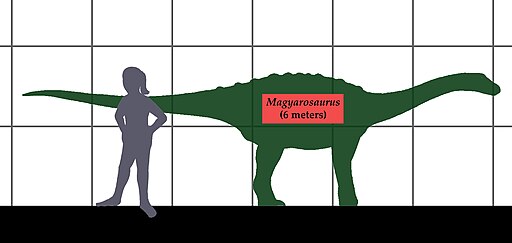The Miniature Titanosaur
Magyarosaurus was a unique, small-sized sauropod dinosaur that lived during the Late Cretaceous period, around 70 to 66 million years ago.

| Meaning | Hungarian lizard [Magyaro-saurus] |
| Pronunciation | MAHD-yar-oh-sore-us |
| When: | Late Cretaceous (about 70–66 million years ago) |
| Where: | Europe (Romania) |
| What: | Sauropod (titanosaurid, dwarf sauropod) |
| Weight: | Estimated around 1 metric ton |
| Length: | Approximately 6 meters (20 feet) |
| Diet: | Herbivorous (ate high vegetation) |
| Discovered: | First described by Franz Nopcsa in 1932 |
Unlike its giant relatives, Magyarosaurus was relatively tiny, measuring about 6 meters (20 feet) in length.
This miniature size was likely an adaptation to its island habitat, a phenomenon known as insular dwarfism, where large animals evolve to become smaller on islands with limited resources.
Magyarosaurus belonged to the titanosaur group, which were the last surviving sauropods.
It had the characteristic long neck and tail of sauropods, but its smaller size made it distinct.
This dinosaur likely fed on low-lying plants, using its long neck to reach vegetation.
Despite its small stature, Magyarosaurus was well-adapted to its environment and thrived in what is now modern-day Romania.
Its fossils, first found in the Haţeg Basin, have helped scientists understand the effects of insular dwarfism and how dinosaurs could vary greatly in size depending on their habitat.
